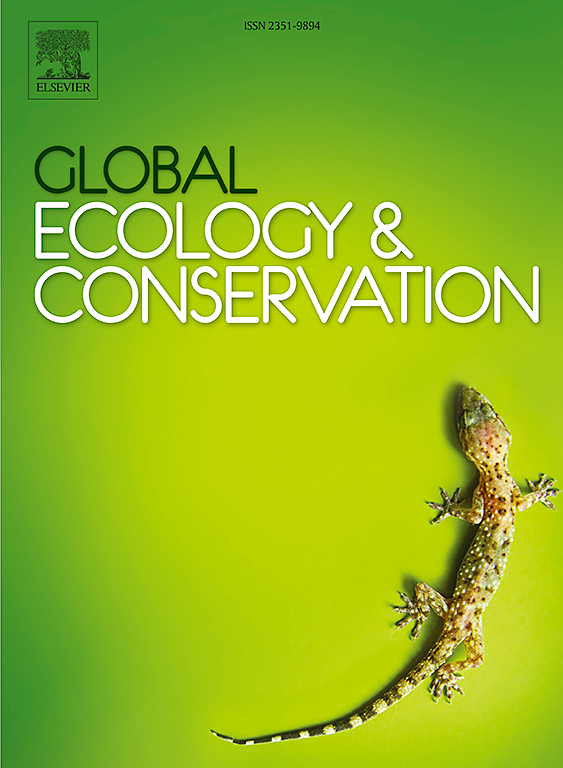Territory densities of heathland breeding birds are enhanced by fire on military training areas
IF 3.5
2区 环境科学与生态学
Q1 BIODIVERSITY CONSERVATION
引用次数: 0
Abstract
Heathland ecosystems have experienced severe declines. Today, the remaining heathlands suffer from succession and airborne nitrogen deposition. To counteract the negative effects of both, various management measures such as choppering, grazing, mowing or sod-cutting have been implemented. However, thus far, these measures only partially halted the loss of biodiversity. We compared environmental conditions and territory densities of characteristic heathland breeding bird species on 91 randomly selected plots in two large heathlands that vary in their long-term land use history: a military training area shaped by fire and a nature reserve where grazing dominates. Our study revealed strong differences in environmental conditions and territory densities. In the military training area, very open habitats accounted for more than two thirds per plot. By contrast, in the nature reserve, semi-open habitats had a share of more than one half per plot. Mean territory densities of open heathland species were 1.6 times higher in the training area compared to the nature reserve. By contrast, territory densities of semi-open heathland species did not differ. Overall, fire was assumed as the key driver of territory densities in characteristic heathland breeding birds. In comparison to traditionally managed heathlands, fire management of heathlands favoured breeding birds in two ways: First, through preserving the nutrient balance, which very likely had positive effects on insect food supply and may also on the formation of eggshells. Second, by creating early successional stages rich in bare ground that allow an easy access to invertebrate food resources. Based on our study, heathland management should aim at rejuvenating heathlands and creating early successional stages regularly without causing nutrient imbalances in the long run. Consequently, we recommend an extension of the area and frequency of prescribed burning in a mosaic-like manner in heathlands, especially outside military training areas.
求助全文
约1分钟内获得全文
求助全文
来源期刊

Global Ecology and Conservation
Agricultural and Biological Sciences-Ecology, Evolution, Behavior and Systematics
CiteScore
8.10
自引率
5.00%
发文量
346
审稿时长
83 days
期刊介绍:
Global Ecology and Conservation is a peer-reviewed, open-access journal covering all sub-disciplines of ecological and conservation science: from theory to practice, from molecules to ecosystems, from regional to global. The fields covered include: organismal, population, community, and ecosystem ecology; physiological, evolutionary, and behavioral ecology; and conservation science.
 求助内容:
求助内容: 应助结果提醒方式:
应助结果提醒方式:


